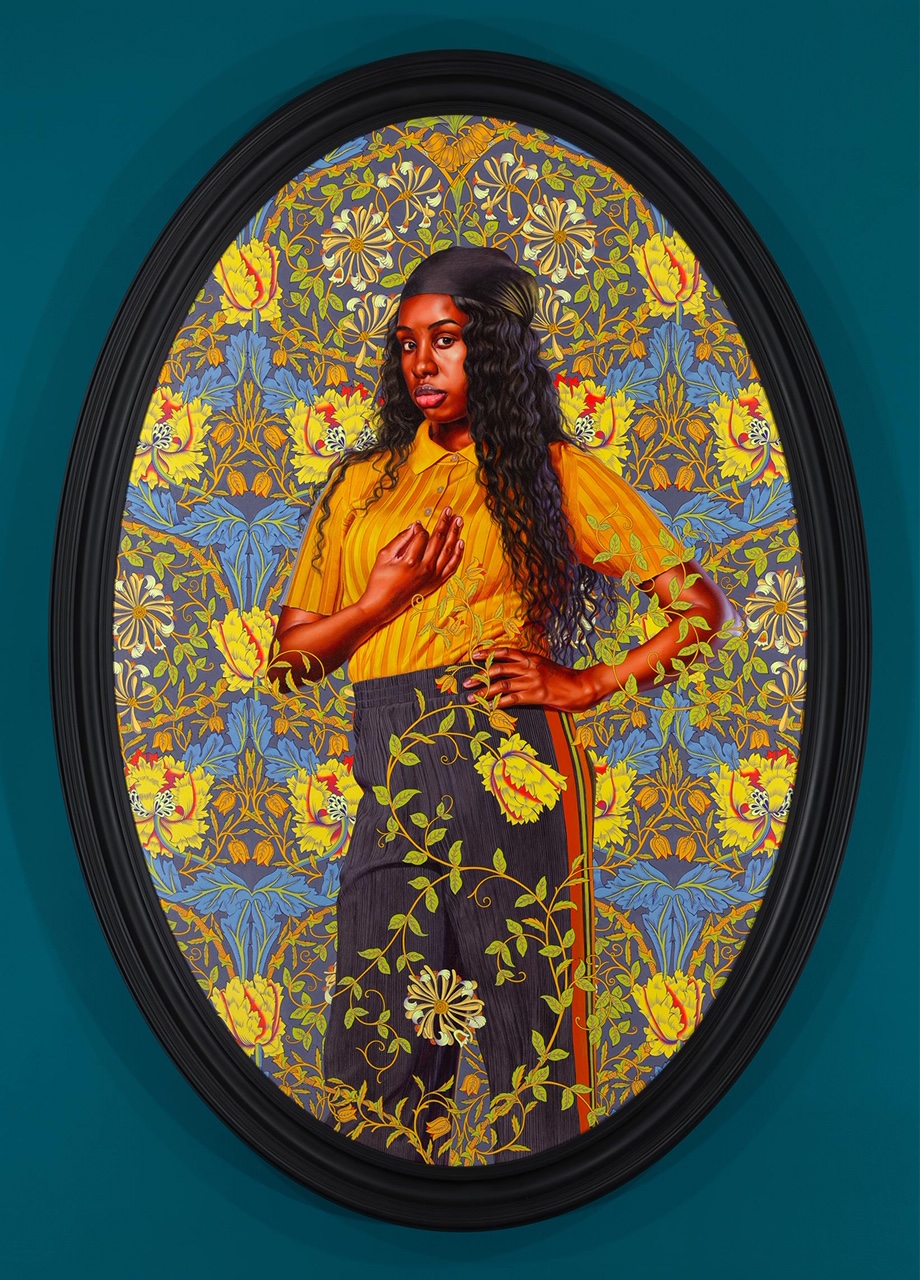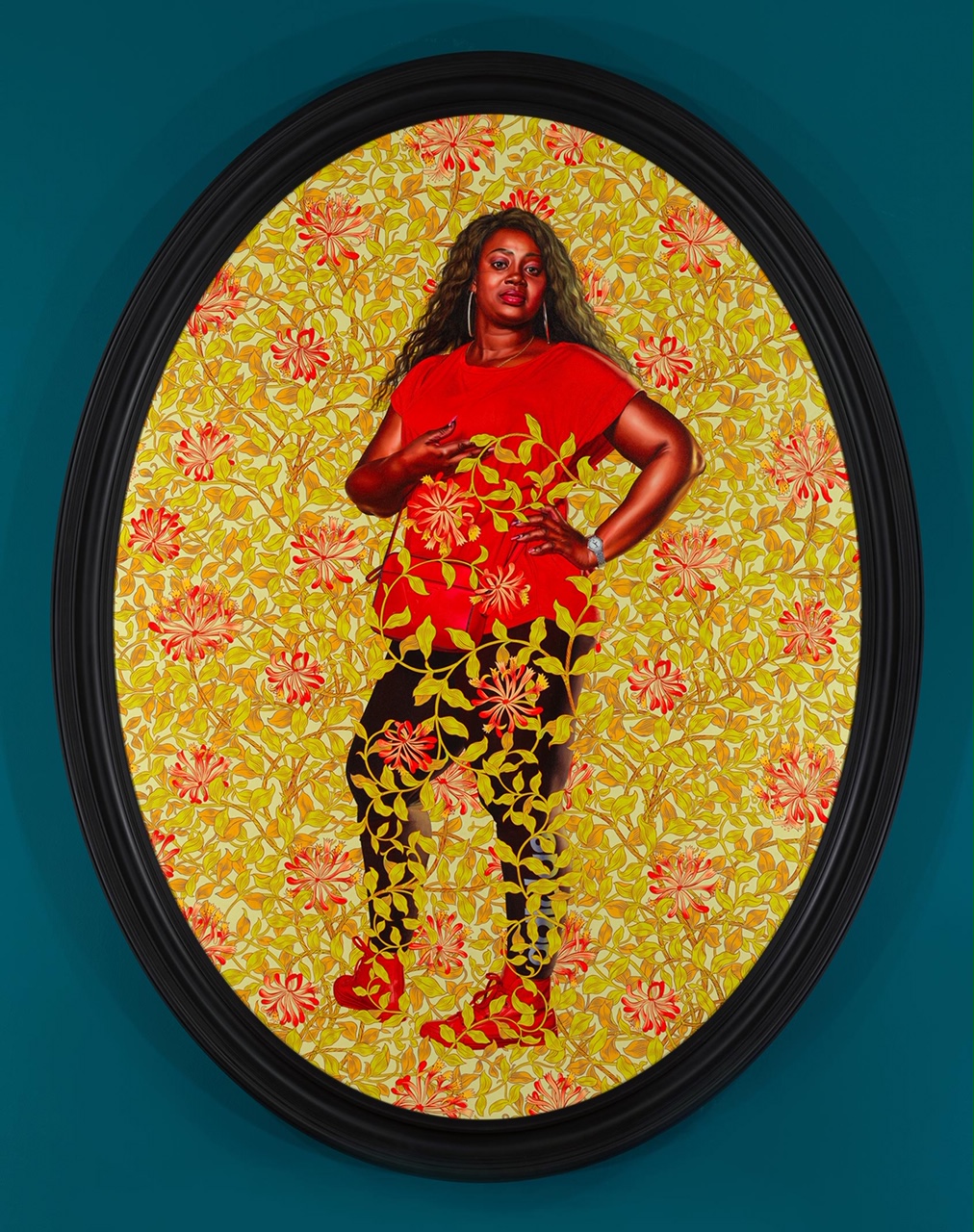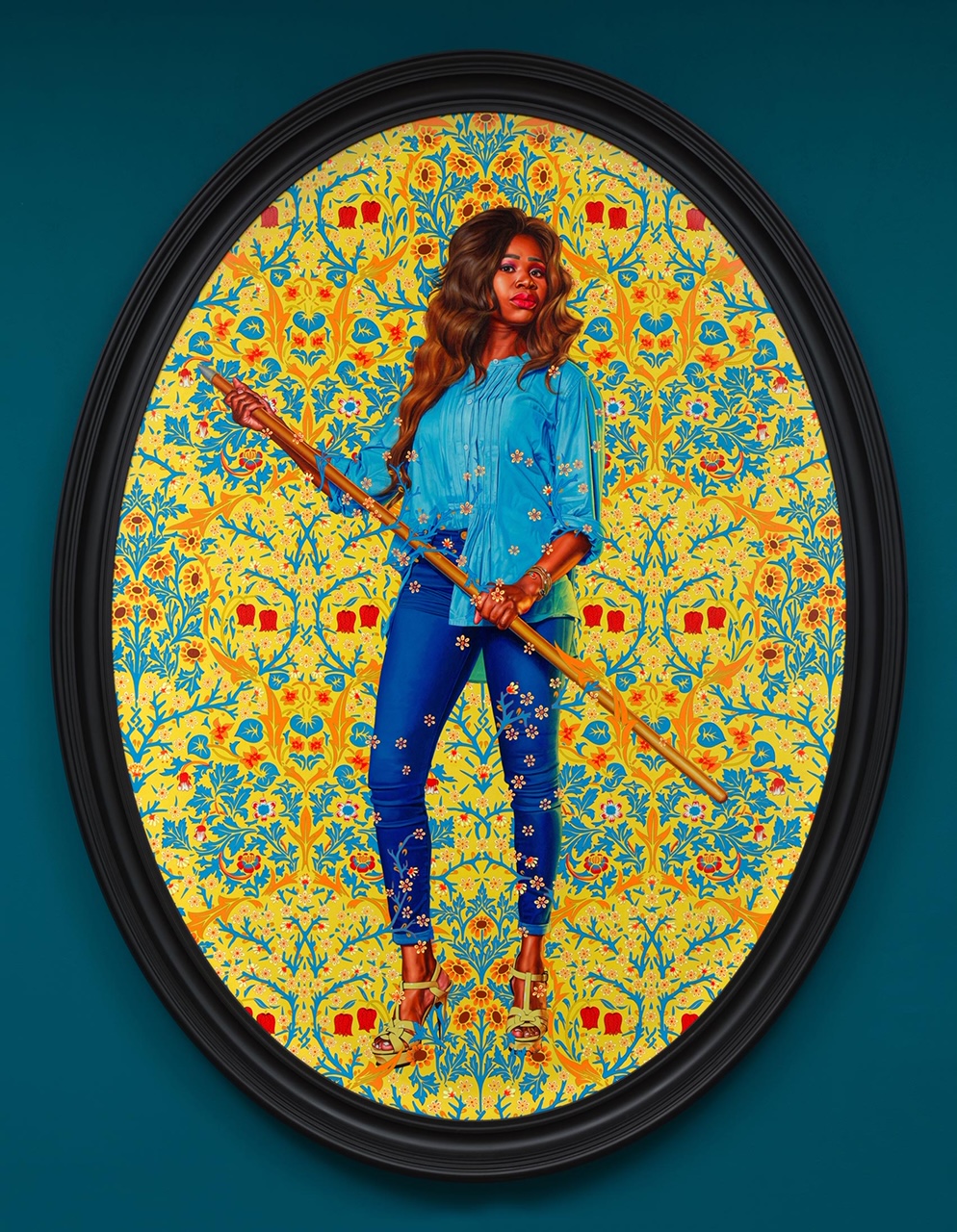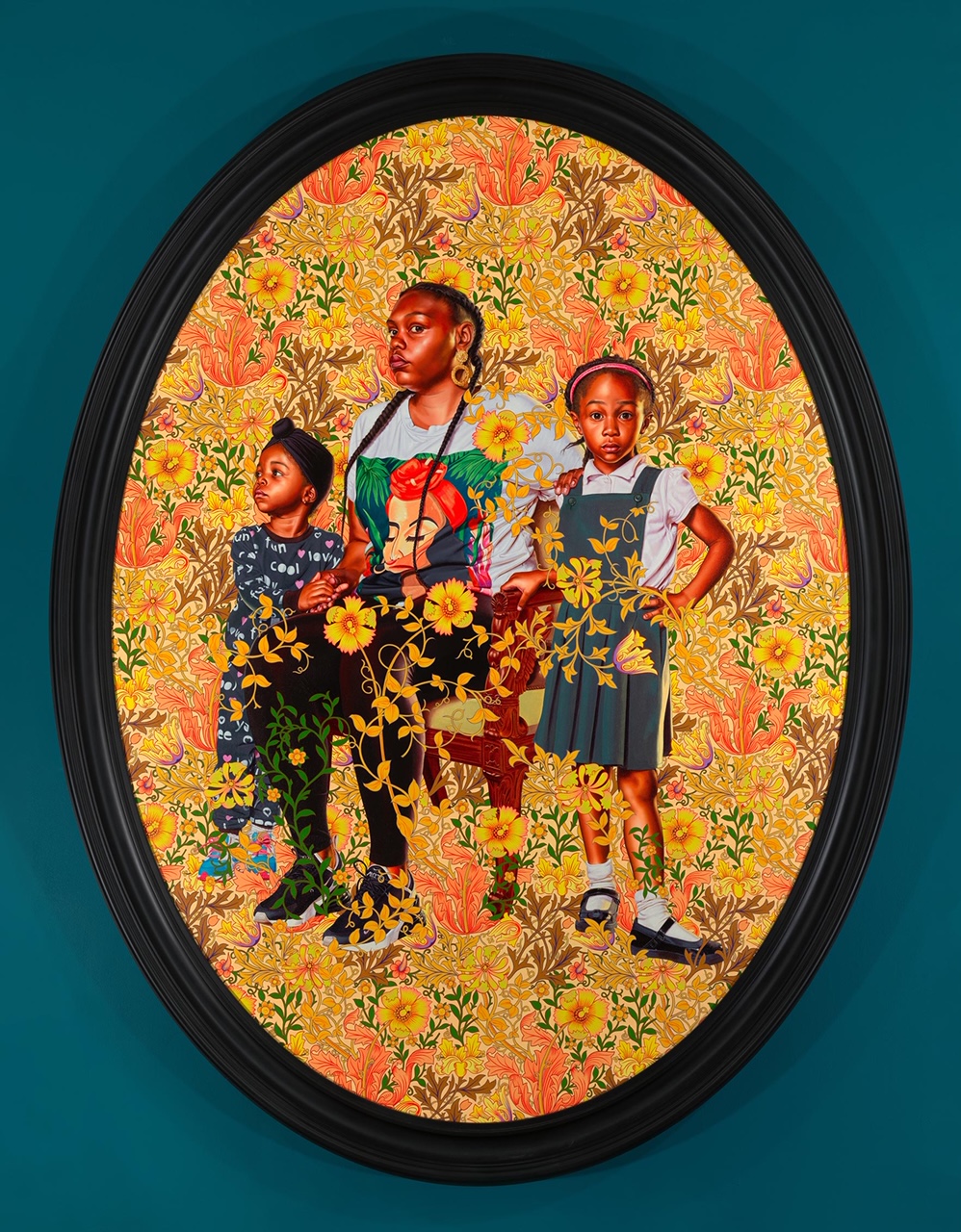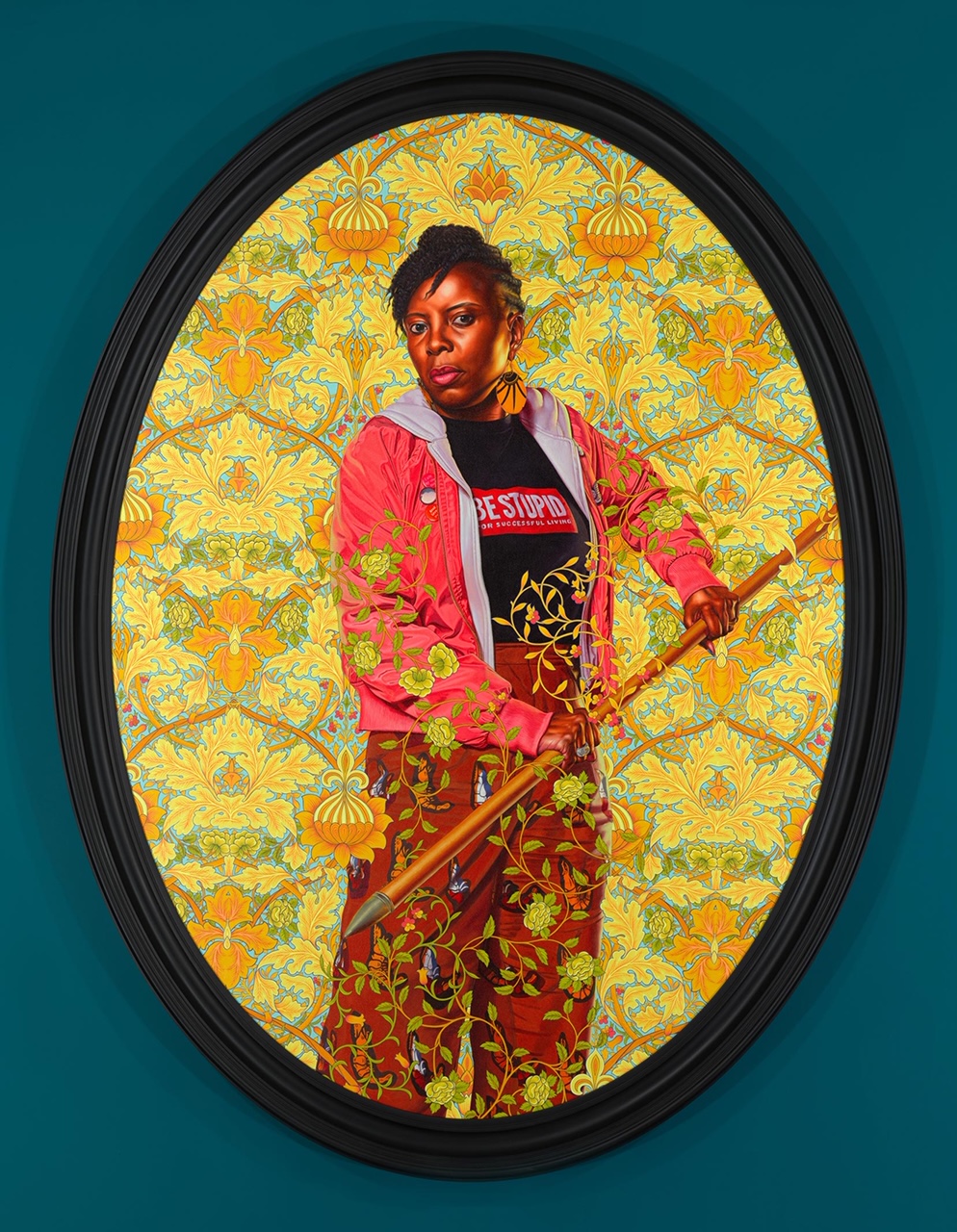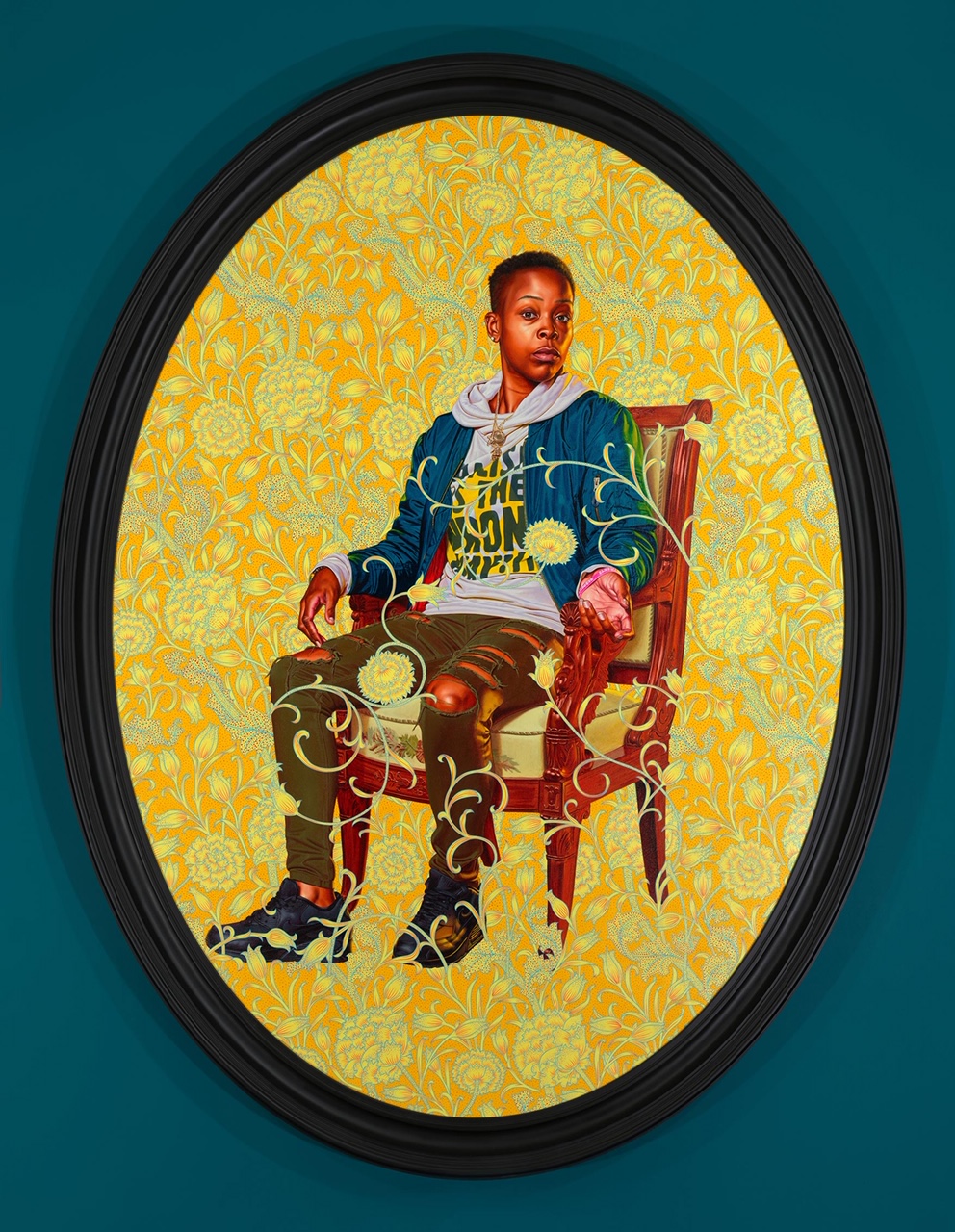‘Kehinde Wiley: The Yellow Wallpaper’ at William Morris Gallery is the artist’s first solo show in a UK museum. Featuring six new large-scale female portraits, the exhibition offers a visual response to American novelist Charlotte Perkins Gilman’s acclaimed feminist text, ‘The Yellow Wallpaper’, 1892. Wiley explains, “‘The Yellow Wallpaper’ is a work of literary fiction that explores the contours of femininity and insanity. This exhibition seeks to use the language of the decorative to reconcile blackness, gender, and a beautiful and terrible past.”
Gilman’s text is a semi-autobiographical tale which sees her narrator confined to her bedroom after being diagnosed with hysteria and explores the disastrous consequences of denying women independence. These new portraits feature women that the artist met on the streets of Dalston, East London. Viewed from below in three-quarter view, the figures gaze directly at the viewer from a lavishly patterned background. Wiley employs the heroic visual vocabulary of traditional portraiture to position the subjects as autonomous, powerful and emblems of strength within a society of complicated social networks. Recalling a style once used almost exclusively to depict white aristocratic subjects, these portraits instill a complex dialogue about race and identity in a post-colonial age.
For over fifteen years Wiley has sourced William Morris’ iconic floral designs for his paintings. Building on his interest in the relationship between the human body and the decorative, Wiley’s model is depicted in a reimagined field inspired by the William Morris oeuvre. Gilman’s ‘The Yellow Wallpaper’ also holds a strong, personal connection to William Morris. Morris’ daughter, May Morris, herself an accomplished designer, struck up a friendship with Gilman in July 1896 when they first met at an International Socialist Conference in London. That autumn, May Morris invited Gilman to give a lecture at her family home Kelmscott House, Hammersmith. A month later William Morris died and Gilman sent a moving letter of sympathy, which was a rousing call to arms: “Do you love to do – to DO and especially to make? With that, and the freedom to exercise it, life has no terrors.”

